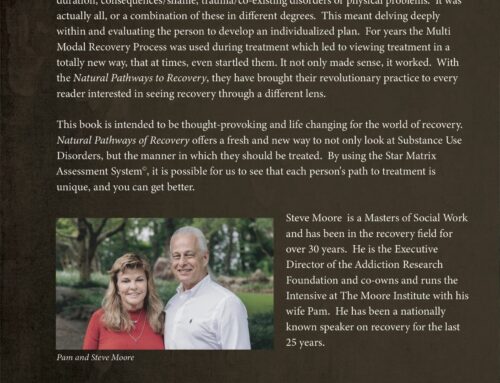The Holidays and Boundaries Part III: Taking a Risk
By Clay Hightower, LMSW
Throughout this entire series on boundaries, I have reaffirmed and will continue to reaffirm that it is my right to set boundaries that ensure my safety, and that others do not get to dictate if they are reasonable or valid. While this remains true, it does not acknowledge the other side of that coin, which is that maintaining boundaries in relationships can create consequences in those relationships. As I stated in my first post, maintaining boundaries can create feelings of fear, responsibility, obligation, guilt, and shame (FROGS) for me. Being on the receiving end of boundaries also creates feelings. The most commonly expressed experience is rejection, which comes out as anger or sadness.
For most, the fear of the impact that a boundary will have on the relationship and the resulting feelings of rejection can be enough to limit how firm of a boundary one is willing to set. People want to feel safe in their relationships, but family systems theory shows that even dysfunctional relationships can feel safer than no relationships at all. I believe that the power of a dysfunctional family system is the strongest deterrent in maintaining firm boundaries. Whether or not it is clinically ideal, I always try to encourage clients to set the boundary that they feel most comfortable with and are most likely to maintain, with the goal being gaining confidence in their ability to set boundaries again in the future. As a result, clients will frequently aim for less firm boundaries like “I will go, but I want to leave if (insert trigger here) happens.” Clients will also frequently feel the need to have a conversation around a boundary with the people that they wish to maintain the boundary with.
While I understand these two desires and certainly believe that they are the best decision with some relationships, it can be confusing for clients and create the illusion that a boundary requires agreement between the two parties. Clients will frequently return to my office for their next session and say something like “I tried to set the boundary like we talked about, but they said…” which lets me know that I needed to do a better job of defining what a boundary is. So, if you are hoping to be able to have a conversation with your family or loved ones around your boundaries for the holiday season but also want to ensure that you maintain your boundaries, here are some frequently asked questions (and answers) that might help you feel more confident about how it goes.
What do I actually say?
You are always allowed to say as much or as little as you want about a boundary, but I always encourage clients to keep it simple. A template like “I do not like (insert behavior here). It makes me feel (insert emotion here).” should be more than sufficient. You can choose to explain more or let them know what you intend to do if the boundary is crossed, but it is not always necessary.
What do I do if they disagree?
You do not have to do anything. If you are satisfied with how you voiced the boundary and believe that you have provided the necessary information, the only necessary remaining action is to follow through with the boundary by ensuring your safety.
What do I do if they get angry or start yelling?
Leave. Whether I excuse myself for as long as I need to collect myself or leave the situation entirely, it is impossible to have a productive conversation when yelling is happening. No matter the quality of the relationship, once yelling begins, both parties are going to enter fight or flight mode. I am unable to hear, think, or speak rationally under those circumstances. Not only does this ensure my safety, but it might also let the other party know that I am serious about my boundary.
What do I do if they say okay at first but then do not stop the behavior?
This is where maintaining the boundary comes in to play. Whether or not it is acceptable behavior, it is quite common for people to initially agree to boundaries and then fall back into old behavior patterns. This is not always done intentionally, but rather the result of longstanding patterns of behavior and the uncomfortability that is change. Trusting your gut is typically the best option. If I believe that it is not done intentionally, I can point out the behavior and reinforce that I do not like it. If I believe it is done intentionally, or it continues after multiple redirects, then I need to do what makes me feel most physically and emotionally safe.
If you have made it through the frequently asked questions and still want to have the conversation, here are some more practical tips to help with the holiday event itself:
- Drive separately. This is probably the most simple and helpful suggestion that I make to clients who are unsure of what kind of situation they are heading in to. Most frequently it will be about going on a first date or meeting up with an old friend, but it is just as applicable in this situation. If I drive myself to the gathering, then I am not beholden to anyone else’s plans or desires. It can also save me from having to signal to the driver or have a potentially uncomfortable conversation around leaving. It gives me the freedom to leave when and how I want, including my favorite “Irish Goodbye.”
- Use more understanding family members as allies. My personal tried and true method for making it through family holidays. When I was younger, it was my brother, and now it is my cousins. Growing up with them, I felt more comfortable talking to them and sharing my feelings and concerns about family gatherings, and since they are part of the same family system, they were able to validate and empathize with that. It did not feel like that much of a risk compared to sharing that with other family members, and now I know that I can rely on them in these situations. Most of the time, it is as simple as exchanging a glance or a head nod. We know that it means to get us out of whatever conversation we are in by asking for our help with something or to come take a look at something with them. Not only does it get me out of the immediate situation, but it also gives me the opportunity to vent and feel heard and validated throughout the gatherings.
- Pay attention to your body. As I mentioned in the frequently asked questions above, no one is able to make rational decisions when they are in fight or flight mode. In that moment, safety is all that matters, and one will do whatever is necessary to feel safe. Doing a body scan and checking in with my breathing and body language can help me be more aware of when I might start to be flooded. In potentially stressful situations like family holidays, my body will start responding long before I consciously recognize that I feel unsafe. If I notice it early, I can take action to reduce my stress level by removing myself from the immediate situation or by leaving entirely. It can help reduce my own internal struggle and prevent me from going through extra emotional harm before recognizing what is happening.
Check back next week for my final post on boundaries, which will include a wonderfully helpful tool for communicating compassionately around sensitive topics!





